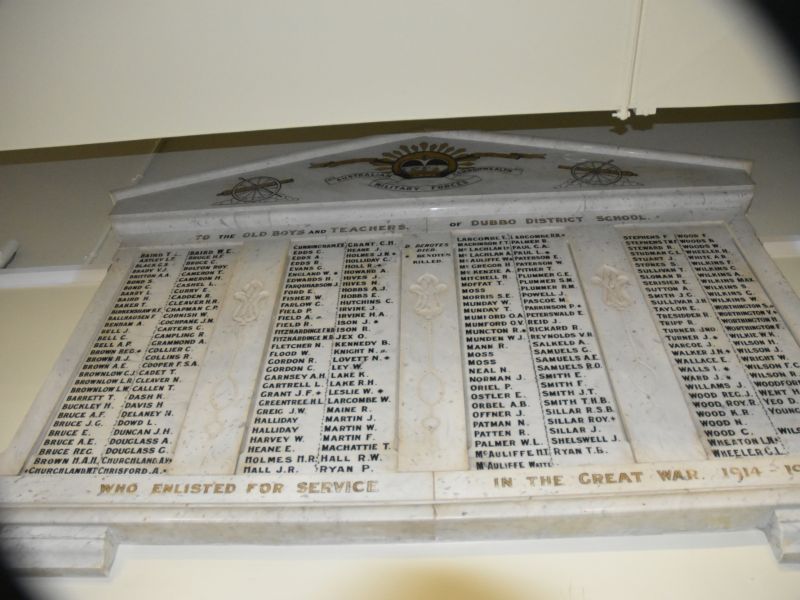Edgar Ford and Edward Wallace
Two names that are on the WW1 Dubbo Public School Honour Roll are Edgar Ford and Edward Wallace. They also went to Dubbo High School when this school opened in Dubbo in 1917.
Edward Wallace served in the 2nd Field Company Engineers on the Western Front at the end of the war. He returned home.
Edgar Ford was the 1917 Dubbo High School Captain and Boys Dux as noted in the Astley Cup Golden Jubilee 1973 book published by the Dubbo High School Ex-Students Union and in the Dubbo Liberal newspaper, dated 14 June 1918. He was at Sydney University in 1918 when he enlisted in the Australian Army in September, shortly after he turned 18. The army authorities did not believe that he was 18 and they wrote to his father to check on his age. His father wrote back to the army and confirmed that his son was indeed 18. The war ended before Ford was sent overseas.
After the war Edgar Ford completed his BA at Sydney University and had a long and distinguished teaching career as a geography teacher in NSW. As well as his teaching ( Newcastle Boys High School, Fort Street Boys High School in Sydney and Australian School of Pacific Administration) Ford wrote or was the co-author of numerous school text books and educational publications. In 1977 he along with Brock Rowe was the joint winner of the inaugural Macdonald Holmes Medal. This medal is awarded every two years by the Geographical Society and Geography Teachers' Association to a person who has made a distinguished contribution in the field of geographical education in Australia.
Edgar Ford also enlisted in the Australian Army on 28 February 1942 during WW2. He was soon recruited to the Australian Army's Directorate of Research and Civil Affairs because of his skills as a cartographer. As Graeme Sligo notes in his book, The Backroom Boys: Alfred Conlon and Army's Directorate of Research and Civil Affairs, 1942-46, the Australian Army had no proper military maps of the Northern Territory. These maps would be essential in repelling a Japanese invasion. So the Directorate headed by Alfred Conlon and including men like Ford set out to construct a very large relief model of Australia and appropriate maps of the Northern Territory so army commanders and their staff could visualise the terrain. The men in this team in June 1942 were Edgar Ford; Dr Edwin Hills, Associate Professor of Geology at Melbourne University who was the leader of the project; Martin Glaessner, another Melbourne University academic; and the sculptor Orlando Dutton. The finished model was very detailed and huge, covering about 26 feet (west to east) and about 24 feet (south to north) and became larger as Timor and New Guinea were added. During the war university students sometimes helped with preliminary work. The model is now stored in the National Archives of Australia. The work done by the cartographical and geographical section of the Directorate during the war was highly praised.
- National Archives of Australia. WW1 Service Records of Edgar Ford and Edward Th… https://discoveringanzacs.naa.gov.au
 Patrick Bourke
Patrick Bourke